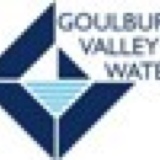Information
-
Job number
-
Site address
-
Conducted on
-
Prepared by
-
Traffic Management must be checked on a regular basis so that the interaction between the public and the activities of the worksite is managed and the impact on the roads and the public is minimal
The checklist is adopted from the Vic. Code of practice worksite safety- traffic management.
The site manager is responsible for ensuring this process is implemented -
Activity being undertaken
-
Estimated traffic volume (vehicles per day)
-
Permanent traffic speed through area
-
Is it a school zone
-
Is it a bus zone
-
Is it a tram zone
-
Clearance between workers and traffic
-
Worksite traffic speed
1. Planning
-
1.1. Has a traffic management plan been selected or provided
-
1.2. Is the plan available for inspection
-
1.3. Is the plan relevant for the work
-
1.4. Are written authorizations for temporary roadworks speed limits required/ in order
-
1.5. Are documented changes (if any) to the traffic management plan available for inspection
-
1.6. Have temporary roadworks speed limits been determined correctly, as per Code of Practice for worksite safety- traffic management
2. Advance warning/ signage
-
2.1. Are all roadworks signs and devices installed according to the traffic management plan
-
2.2. Have any contradictory, distracting or superfluous signs or marking been covered up or removed
-
2.3. Are sign appropriate for current conditions? (Eg symbolic worker signs not displayed/ not visible when no worker are onsite, road condition signs after worksite vacated)
-
2.4. Is signage suitably placed, especially for vehicles approaching at high speed? (Eg check sight distance, advanced warning sign distance, height of signs above ground, vehicle queue length not beyond signage, check potential "end of queue" issues
-
2.5. Are multi message signs being used correctly
-
2.6. Are the signs free from damage and defect (eg easy to read, check shadow and glare issues)
-
2.7. Are sign mountings secure, stable and not a hazard to road users if struck
-
2.8. Are signs in pairs where needed? ( recommended on high speed high volume roads and multi lane roads
-
2.9. Are flashing arrow signs available and in use where required?
-
2.10. Are sign sizes correct?
3. Worksite
-
3.1. High visibility clothing appropriate for conditions and used and worn correctly? (Eg day/night, meet AS4602-1999 and AS1906.4-1997, clean, fastened, personnel visible at all times in all conditions
4. Work zones seperation
-
4.1. Are clearances between workers and adjacent traffic being maintained
-
4.2. Have safety barriers ( where used) been installed correctly? ( eg units connected, recommended length, proper end treatment installed, water filled where required, correct rating for speed zone, "no go" zones observed)
-
4.3. Has containment fence been installed where required? (Eg workers/ pedestrians/ cyclists seperation)
5. Other road users
-
5.1. Has possible traffic congestion been considered and steps taken to avoid it
-
5.2. Have the effects of the works on public transport been considered?
-
5.3. Have needs of other road users been provided for ( eg pedestrians, cyclists, wheelchairs)
-
5.4. Has proper access to side roads and properties been provided?
6. Hazard checklist
-
Potential hazard: ( add controls in)
Clearance to traffic
Poor advance sight distance to worksite (<200metres)
Narrow pavement with no escape path (<2.9metres wide)
Excavations adjacent to worksite
Rough or unsealed road surface
End of queue build up of traffic/ poor sight distance to end of queue
Works vehicles entering / leaving worksite
High speed traffic through worksite
Poor observance of directions/ instructions by motorists
Presence of workers at all worksites
Presence of unprotected hazards within the clear zone
High volume of traffic through worksite (>10,000vpd)
High volume of heavy vehicles
Cyclists/ pedestrians through worksite
High speed traffic through worksite
Other -
Add signature












